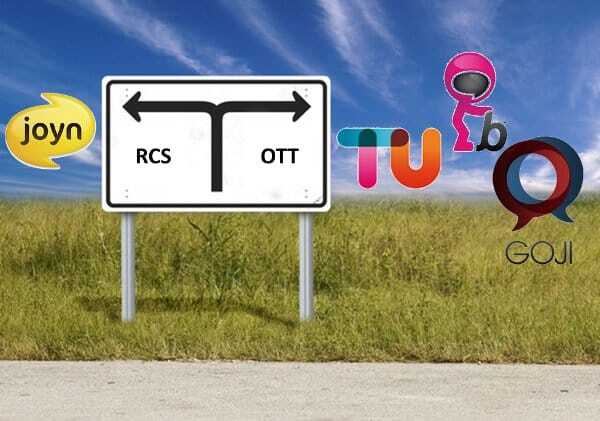[UPDATE: Unsurprisingly, Joyn died a silent death, with the carriers switching back to RCS and NOT launching it even in 2019…]
Carriers are at an impasse these days: what technology to adopt for their next communication platform?
They are about to roll out LTE services, which are all-IP mobile broadband. And at the same time, they are being pressured by OTT players who are now offering services instead of the carriers.
Carriers can select to go with Joyn, or with an OTT solution: Telefonica, T-Mobile and Telio have such offerings already.
Migrating to LTE means switching from the good old circuit switched technology they are using today for voice calls to something else – VoIP based. The carrier solution coming from GSMA is called RCS and is now branded as Joyn.
But there is another alternative, and that is to play the OTT game: to build a VoIP solution that ignores anyone else but the carrier’s own network, and to build the touch points to other networks in the form of gateways – similar to how Skype provides SkypeIn and SkypeOut services on the technology side.
Which should it be?
If you look at the official Joyn website and check which operators are adopting it, you will find Telefonica and Vodafone, with Orange coming soon. Telefonica, though, have its own vested interest in Jajah, with their recently launched TU Me OTT service. Hmm.
Carriers aren’t committing at the moment to either option. Those that can try to test both, and in both cases with low profile.
Aapo Markkanen provides his insights on both technologies on ABI research.
On Joyn:
The problem that I see is that when Joyn/RCS finally becomes available – even on a wide range of handsets, thanks to operators’ bullying efforts – its upgrade cycles will be far too long. It has taken a long time to develop, and I don’t have any reason why the forces behind it would be more agile when it comes to taking it further.
On the TU Me OTT play:
That’s the likeliest reason why Telefonica has decided to hedge its bets with TU Me […]
It will be able to move faster, release and experiment on products in beta, and kill off unviable projects early on. That’s something what most telecoms operators, let alone a consortium of them, simply won’t be able to do.
So you see, carriers can either choose ubiquity with Joyn or go for a Telco OTT play of their own.
Where and how WebRTC fits in here if at all? That’s for another post.


Tsahi, it is an interesting post.
I would like to make some comments about this RCS vs OTT issue.
RCS is an IP technology, it could be offered as OTT, you can create RCS identities not linked at all to MSISDN or SIMcards.
Why I would prefer RCS? Because it could be a great platform to build use cases on top and even to address the long tail of developers with an attractive REST API (disclaimer, we work on that).
In these day we are seeing how legacy telco common enablers as voice and SMS are being succesfully integrated in applications and internet solutions thanks to the APIs of great companies as Voxeo Tropo and Twilio.
It could be the same with a new common enabler as it will be RCS.
Creating new communication silos only useful to communicate person to person and competing to offer an extra feature will make no sense. If would like to have each silo particular feature available you will have to run at the same time 10 different comms apps in the device and try to remember which contact is also user of each app. Also the batteries will be complaining 🙂
RCS as defined has enough features to start and properly exposed by APIs allow freedom to create endpoints as web, TV app, also use WebRTC, and create messaging rich interaction based services.
In a lot of countries the banking system is based on the SMS, how huge will be to improve it with a more powerful experience as RCS?
Juan,
Your reasoning is solid. The only requirement is for all carriers to implement RCS and provide roaming capabilities for it. Without this prerequisite, the end result will be a siloed OTT solution that suffers from the inability to innovate and to offer short release cycles as OTT can – it will get the worst of both worlds.
So there is risk involved with this approach.